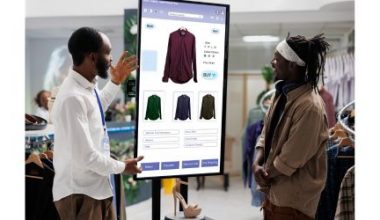Imagine spending a lot of time and money on ads, but it looks like nobody is even noticing the ads, talk more of paying attention. This is a major dilemma for brand owners. While there are so many advertising platforms like Google and TikTok, it can be hard to decide which is right for your goals and budget and will yield a good ROI. This guide is here to simplify that process, helping you understand what advertising platforms are, why they’re important for growing your brand, and how to select the ones that best align with your objectives.
What Are Advertising Platforms?
We’ll start by defining what advertising platforms are. Simply put, an advertising platform is a channel that helps brands promote their products or services to a specific audience. These platforms range from social media networks and search engines to websites and apps. Each offers various ad formats and targeting options to reach potential customers effectively.
How Do These Advertising Platforms Work?
Advertising platforms have three major components that help you reach your target audience more effectively:
#1. Ad auctions
These occur in real time when an advertising spot becomes available. Advertisers bid for slots depending on the value they allocate to them, which is frequently determined by keywords, audience demographics, or the platform itself. The highest bidder, or the bidder who provides the most value in terms of both bid amount and ad quality, gets the ad slot.
#2. Targeting options
These ensure that advertisements reach the most relevant audience. Audiences can be segmented depending on demographics, interests, and behaviors. For example, a fitness equipment store can target consumers interested in health and fitness based on their age, geographic region, or recent search history for workout gear.
#3. Types of ads
Ads can be in the form of text ads, display ads, video ads, and interactive ads. You choose a format depending on your campaign goals, product, or service, and where your target audience spends time online. For instance, a video ad might be more effective on a platform like YouTube. A text ad could perform better on Google’s search engine result pages (SERPs).
Let me break it down further: a small business launches a new product and uses an advertising platform to promote it.
- The business sets a budget and bids for (video) ad slots on a social media network like Instagram, targeting users who have expressed interest in similar products
- The advertising platform displays its ad to targeted users
- The platform’s algorithms optimize the ad’s delivery. Ensuring it reaches individuals most likely to engage based on their past online behavior and preferences.
- Interested users engage with the ad and perform a desired action. Like signing up for the product’s free demo or registering for a webinar that discusses the product in more detail.
This targeted approach maximizes the ad’s impact, improving its chances of driving sales and achieving a better return on investment (ROI).
In the past, advertising was limited to traditional options like TV, radio, and print, but this has evolved over time to include various digital platforms. This brings us to the different types of advertising platforms available:
Types of Advertising Platforms
- Digital Platforms: These include social media channels (e.g., Facebook, Instagram, Twitter), search engines (like Google and Bing), video platforms (YouTube, TikTok), and display ad networks.
- Traditional Platforms: Although digital media is increasingly popular, traditional platforms like TV, radio, and print media remain highly effective, especially for large-scale reach and brand building.
The Best Online Advertising Platforms Available
Here are some of the best, most popular advertising platforms for 2024:
#1. Google Ads
Google dominates the search engine market with an 83% share, making Google Ads a powerful platform for businesses. Through Google Ads, companies can create PPC campaigns, paying only when users click on ads. Search ads blend with organic search results, while display ads appear across Google’s Display Network of over 2 million websites, reaching audiences through keyword targeting, topics, or specific sites. Google Ads are highly effective but also competitive, especially in crowded industries. I’ll advise you start with a modest budget, monitor performance, and consider hiring professionals to maximize returns.
#2. Microsoft Advertising
Microsoft Advertising (formerly Bing Ads) includes search and display ads shown on Bing, Yahoo, DuckDuckGo, AOL, and other Microsoft networks like Outlook and MSN. Although Microsoft’s reach is smaller than Google’s, it provides access to a different audience. Thanks to a partnership with OpenAI, Microsoft now offers AI-powered search on Bing, increasing ad visibility. Microsoft Ads use a PPC model similar to Google Ads and are cost-effective, often having a lower CPC. Businesses can use Microsoft as a testing ground, with successful campaigns potentially expanded to Google for greater reach.
#3. LinkedIn
LinkedIn, with over 1 billion users, is uniquely suited for business-oriented advertising with diverse ad formats like Carousel, Event, Lead Gen, and Video ads, allowing for highly tailored campaigns. LinkedIn’s targeting capabilities stand out, enabling ads to reach specific industries and job titles, which is especially beneficial for B2B advertisers and talent seekers. Additionally, LinkedIn’s Accelerate campaign type assists those with limited ad experience by optimizing performance automatically. LinkedIn ads are ideal for businesses aiming to grow a professional network, promote job openings, and reach industry-specific audiences.
#4. YouTube
YouTube is a leading video platform with over 2.7 billion monthly users, offering multiple ad formats: skippable and non-skippable in-stream ads, bumper ads, in-feed ads, and outstream (mobile-only) ads. Advertisers can choose from two payment models: CPC, charging only for ad clicks, and CPV, charging when the full ad is viewed. With Google’s network, YouTube ads reach a wide audience across various sites. Ideal for businesses with resources for video, YouTube ads provide strong audience engagement and flexible payment options for driving traffic (CPC) or building brand awareness (CPV).
#5. Facebook (Now Meta)
Meta’s vast reach includes nearly 4 billion monthly users across Facebook, Instagram, and the Audience Network, offering ads in various formats such as photo, video, carousel, stories, and more. Businesses can set budgets, bids, and choose payment models (impressions or conversions), similar to Google Ads. Meta ads suit diverse goals, with each ad type delivering varying effectiveness based on audience and industry. While Meta’s broad audience and format range make it appealing for most businesses, testing is essential to find what works best. Tracking performance is key to optimizing Meta ads for successful campaigns.
#6. Instagram
With over 1.3 billion users, Instagram is a prime platform for reaching targeted audiences, especially younger users (61% aged 18-34). Instagram ads, managed through Meta, offer formats like image, video, carousel, story, collection, shopping, explore, and reel ads. These ads can also appear on Facebook, expanding reach but impacting the budget. Ads are priced on a CPC model, varying by industry and audience. Instagram ads are ideal for businesses aiming to connect authentically, especially eCommerce stores, as shopping ads integrate directly with Instagram catalogs for seamless purchases. However, it’s mobile-focused, so a tech-savvy audience is key.
#7. TikTok
TikTok, with 1.7 billion monthly users, is a video-centric platform offering diverse ad formats ideal for online advertising. Ads include In-feed videos, TopView ads, Branded Effects, Hashtag Challenges, and Brand Takeovers. Integration with Shopify, Ecwid, WooCommerce, and BigCommerce enables direct purchasing, making TikTok ads suitable for B2C e-commerce. TikTok’s video-first audience expects dynamic ads, with over 100 ad templates simplifying ad creation for beginners. Brands seeking increased visibility and engagement will find TikTok’s variety of ad options and e-commerce integrations beneficial for reaching potential buyers quickly and effectively.
#8. Snapchat
Snapchat, with 750 million monthly users, primarily appeals to Gen Z and Millennials. It emphasizes video and image sharing, where brands can advertise via single image or video ads, collection ads, story ads, or AR lenses. Video ads can run up to three minutes, though shorter videos (around 10 seconds) perform best. Snapchat’s audience skews young, with most users aged 15-35, making it ideal for brands targeting younger demographics. Businesses can also create free profiles to showcase products and grow a following, even without paid ads, while ads provide direct engagement opportunities.
Why Do You Need An Advertising Platform for Your Brand?
Using the right advertising platform helps you in so many ways. Here’s why:
#1. Audience Reach
Each platform has a unique audience. Google Ads can place your product in front of billions of daily users, while Facebook and Instagram provide tools to reach niche audiences with specific interests. The more targeted your ad reach, the more likely you attract the right customers.
#2. Brand Visibility
Consistent advertising on the right platforms builds visibility and strengthens your brand image. People start recognizing your brand and associating it with your product or service, which builds trust over time.
#3. Cost-Effectiveness
For brands with limited budgets, digital platforms allow targeted advertising at a fraction of traditional media’s cost. Social media platforms, for instance, offer flexible budget options and enable brands to reach people efficiently without breaking the bank.
#4. Data Insights
Platforms like Google, Facebook, and Instagram provide in-depth analytics. This allows you to track which ads are working, which ones are not, and how to optimize your strategies. This insight is invaluable for creating better campaigns and maximizing your return on investment (ROI).
Factors to Consider When Choosing an Advertising Platform
I’ve seen people invest their energy and resources on platforms that are not suited to their needs, which is a costly mistake to make. You should consider some factors while choosing an advertising platform for your brand, which include:
#1. Audience Demographics
Ask yourself, where does your target audience spend their time? You can consider TikTok, Instagram or YouTube if you’re aiming at younger audiences. On the other hand, LinkedIn and Twitter might work better for professional audiences and B2B brands.
#2. Budget Considerations
Every platform has different pricing models, and your budget will play a huge role in the platform you choose. Social media ads are typically affordable, while platforms like TV and radio can be costly but provide significant reach. Consider what portion of your budget you’re comfortable spending and look for platforms where you can optimize ROI.
#3. Type of Product or Service
Some products thrive on visual platforms. Fashion brands, for instance, achieve a lot on Instagram, while service-oriented brands might perform better on Google Ads or LinkedIn. The format and medium should suit the product or service.
#4. Ad Format Options
Each platform has a unique set of ad formats. Facebook and Instagram offer options like image, video, and carousel ads, while Google provides search, display, and video ads. Consider the format that best represents your brand’s story.
#5. Platform Analytics and Tracking Capabilities
The ability to track and analyze campaign performance is essential for long-term success. Choose platforms that provide robust analytics tools so you can continually optimize your campaigns.
#6. Competitor Analysis
See what platforms your competitors are using effectively. Are they running display ads on Google? Or focusing on video ads on YouTube? Learning from your competitors can save time and money as you can adopt successful strategies and avoid pitfalls.
Step-by-Step Guide: How to Choose the Right Advertising Platform for Your Brand
Let’s go through a step-by-step approach to choosing the right platform:
Step #1. Define Your Campaign Goals
Identify what you want to achieve with your campaign. Are you looking for brand awareness, lead generation, or direct sales? Your goal will guide you in selecting a platform that aligns with that aim.
Step #2. Research Your Audience
Gather as much data as possible on your audience. Use tools like Google Analytics, Facebook Audience Insights, or conduct surveys to understand where your potential customers spend their time online and how they engage with brands like yours.
Step #3. Assess Each Platform’s Strengths and Weaknesses
Look into what each platform offers in terms of audience reach, ad formats, costs, and targeting capabilities. For instance, Facebook excels at precise audience targeting, while YouTube is exceptional for video storytelling.
Step #4. Set a Budget
Allocate your budget carefully. If you’re a small business, focus on platforms where you can reach a highly targeted audience without overspending. Try allocating a small budget for testing initially.
Step #5. Test and Measure
Start with a small campaign, track performance metrics closely, and adjust based on what works and what doesn’t. Regular optimization is key to success, so don’t be afraid to experiment and pivot as needed.
In Conclusion,
Choosing the right advertising platform requires a clear understanding of your audience, goals, and budget. The best platform is one that not only aligns with your brand’s values and goals but also resonates with your audience and provides measurable results. Remember, the marketing landscape is always evolving, so regularly reassess your choice to adapt to new trends and shifts in audience behavior.
Every platform is unique, and your ideal advertising mix may include a combination of options. Don’t be afraid to experiment and learn; after all, that’s the only way to see what truly works for your brand.






